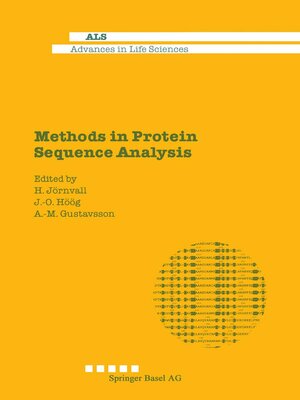
Sign up to save your library
With an OverDrive account, you can save your favorite libraries for at-a-glance information about availability. Find out more about OverDrive accounts.
Find this title in Libby, the library reading app by OverDrive.



Search for a digital library with this title
Title found at these libraries:
| Library Name | Distance |
|---|---|
| Loading... |
Methods in protein sequence analysis constitute important fields in rapid progress. We have experienced a continuous increase in analytical sensitivity coupled with decreases in time necessary for purification and analysis. Several generations of sequencers, liquid/solid/gas-phase, have passed by and returned in other shapes during just over two decades. Similarly, the introduction of HPLC permitted an enormous leap forward in this as in other fields of biochemistry, and we now start to see new major advances in purification/analysis through capillary electrophoresis. Furthermore, progress in the field of mass spectrometry has matched that in chemical analysis and we witness continuous development, now emphasizing ion spray and other mass spectrometric approaches. In short, protein analysis has progressed in line with other developments in modern science and constitutes an indispensable, integral part of present-day molecular biology. Even the available molecular tools, in the form of proteases with different specificities, have increased in number, although we still have far to go to reach an array of "restriction proteases" like the sets of nucleases available to the molecular geneticist. Of course, conferences have been devoted to protein sequence analysis, in particular the MPSA (Methods in Protein Sequence Analysis) series, of which the 8th conference took place in Kiruna, Sweden, July 1-6 1990. Again, we witnessed much progress, saw new instruments, and experienced further interpretational insights into protein mechanisms and functions.







